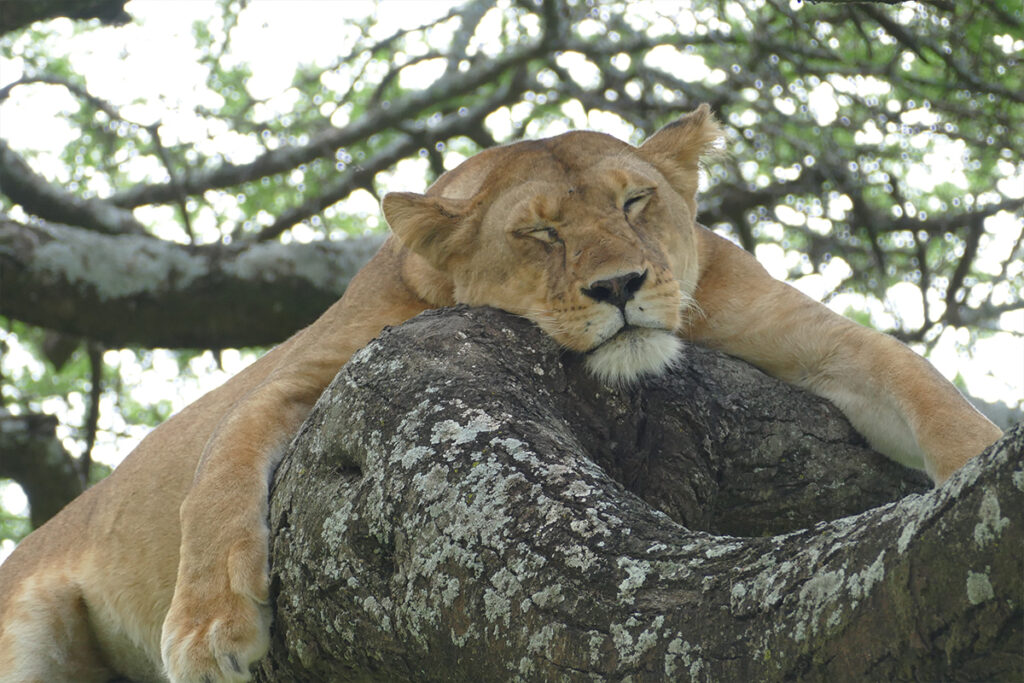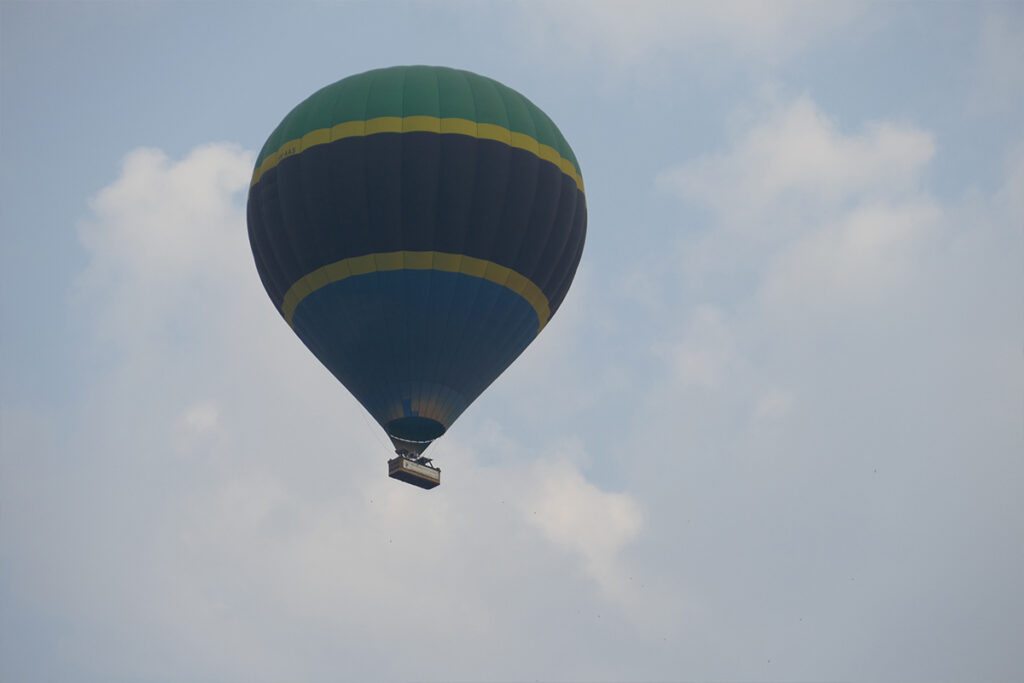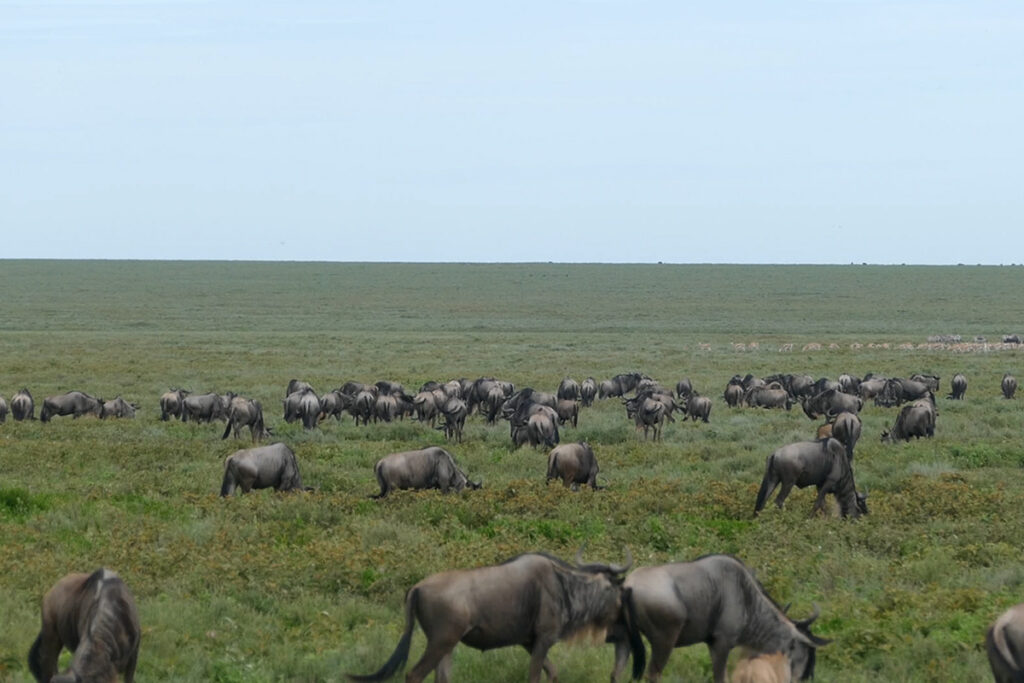- The best time to visit the Maasai and Hadzabe tribes is during the dry season.
- From June to October and late December to March, the weather is ideal for travel.
- This period offers pleasant temperatures, minimal rainfall, and excellent opportunities for cultural immersion.

Best Time of Year to Visit the Maasai and Hadzabe Tribes
The best time to visit the Maasai and Hadzabe tribes is during the dry season. This period typically falls between June and October and again from late December to March. The weather is less humid, making travel more comfortable. Hiking and outdoor activities are also more enjoyable without the frequent rain that occurs in other months. According to this post, these months also offer better conditions for wildlife viewing.
Visiting during the dry season allows for smoother transport and access to rural areas. Rainy seasons can cause muddy and impassable roads which may disrupt plans. You’ll also have the chance to see annual migrations that occur during these months. This can add an extra layer of cultural and natural richness to your trip. Here is the article that highlights why safaris during these periods are highly recommended according to the article.
There are special events hosted by the tribes throughout the year. However, the dry season optimizes the viewing of traditional ceremonies and village activities. It’s easier to plan around these events with the availability of reliable transportation. You can also engage in immersive experiences without the hassle of unpredictable weather.
If you prefer a quieter visit, consider traveling during the off-peak months outside of the major tourism seasons. These quieter times allow for more intimate interactions with tribe members. You can observe daily life without the crowd. This provides a more personal and authentic experience. The off-peak times are typically around April and May or November.
1. Optimal Season for Cultural Immersion
The optimal season for cultural immersion with the Maasai and Hadzabe tribes is the dry season. The Maasai host vibrant ceremonies during this period. The Hadzabe also enjoy clear weather for their traditional hunting practices. You’ll find the tribes’ daily life easier to observe and engage in. From June to October is especially rich with cultural activities.
During this time, transportation is generally more reliable. This allows you to reach remote villages without the hassle of heavy rains. Tribal events are unimpeded by weather, making for better photographs and deeper experiences. You can witness dances, rituals, and community gatherings. These events foster an authentic connection with the tribes.
The dry season also means more opportunities for outdoor adventures. Activities like trekking and wildlife safaris complement your cultural visit. The landscape is beautiful and diverse, adding to the immersive experience. You’ll enjoy participating in tribal routines without weather-related distractions. This leads to a fuller appreciation of their unique lifestyles.
To make the most of your visit, plan ahead. Align your travel with scheduled festivals and important tribal events. By doing this, you can dive deep into their rich cultural tapestry. Engage with local guides who know the best experiences. This preparation ensures a meaningful and memorable journey.
2. Weather Considerations for Travel Plans
Weather plays a crucial role in planning your visit to the Maasai and Hadzabe tribes. The dry season, from June to October and December to March, is ideal for travel. During these months, the weather is usually warm and pleasant, making outdoor activities more enjoyable. Rainfall is minimal, ensuring better road conditions and accessibility. It’s also a good time for wildlife viewing and hiking.
Conversely, the rainy seasons from April to May and November can be challenging. Heavy rains can make roads muddy and difficult to traverse. This might hinder your ability to reach remote tribal areas. Wet conditions can also disrupt planned activities and ceremonies. It’s important to consider these factors when scheduling your trip.
If you plan to visit during the rainy season, be prepared for unpredictable weather. Pack appropriate gear such as waterproof clothing and shoes. Be flexible with your itinerary as some activities may need to be rescheduled. It’s always wise to have alternative plans. This ensures you can still maximize your experience despite the weather.
Another aspect to consider is the impact of weather on health. Mosquitoes are more prevalent during the rainy season, increasing the risk of malaria. Packing insect repellent and taking necessary precautions is advised. Ensure you stay hydrated and protect yourself from the sun. Balancing these considerations will lead to a safer and more comfortable trip.
3. Tour Availability and Scheduling with Sia Yangu Safari
When planning your visit to the Maasai and Hadzabe tribes, Sia Yangu Safari offers a variety of tours. They ensure you can find one that fits your schedule and preferences. Tours are available throughout the year, with each season offering unique experiences. The dry season tours are often more popular due to favorable weather conditions. Booking in advance is recommended to secure your preferred dates.
Sia Yangu Safari provides flexible scheduling options. This helps accommodate your travel plans. They offer both group and private tours depending on your preference. Customizable itineraries are also available. This allows you to tailor your visit based on specific activities and interests. The staff is knowledgeable and eager to help plan the perfect trip.
To enhance your experience, Sia Yangu Safari includes visits to key tribal locations. You’ll get to explore traditional Maasai villages and Hadzabe communities. Each tour is designed to maximize cultural immersion. Learning from tribe members and engaging in authentic activities is a priority. Here is the article describing these immersive tours in detail according to the article.
During peak travel times, tours might fill up quickly. Planning ahead ensures you don’t miss must-see events. Sia Yangu Safari offers online booking services. These make securing your spot simple and efficient. Additionally, you can find deals and discounts on certain tours. Checking their website regularly can provide timely opportunities.
Special seasonal tours are also available. These highlight particular cultural events and ceremonies. You can plan your visit to coincide with significant tribal festivities. These periods offer deep insights into Maasai and Hadzabe traditions. Witnessing these seasonal highlights adds depth to your journey.
Travelers can also opt for themed tours. These include wildlife safaris combined with cultural visits. Such tours enrich your experience by blending nature and culture. Guides ensure a seamless integration of activities. This approach makes your adventure more comprehensive and memorable.
4. Special Events and Ceremonies in Tribal Calendars
The Maasai and Hadzabe tribes celebrate a variety of special events and ceremonies. These include initiation rituals, harvest festivals, and communal gatherings. Such events provide a unique glimpse into their cultural heritage. Timing your visit to coincide with these festivities can be highly rewarding. It allows for deeper immersion into tribal life.
Among the Maasai, the Eunoto ceremony is a significant event. It’s a rite of passage for young warriors transitioning to elder status. This ceremony involves dances, songs, and symbolic activities. It’s usually held during the dry season. Witnessing Eunoto adds profound cultural understanding.
The Hadzabe tribe hosts hunting celebrations, marking successful excursions. These events showcase traditional skills and communal spirit. Archery competitions and storytelling sessions are part of the festivities. Such celebrations embody the Hadzabe’s close relationship with nature. They occur sporadically throughout the year.
Planning around these ceremonies ensures a richer experience. Consulting tribal calendars can help schedule your visit. Engaging with local guides is beneficial. They offer insights into the timing and significance of events. This way, you won’t miss key ceremonies during your stay.
Another notable Maasai event is the Olpul ritual. This celebration involves the consumption of a specially prepared bull. It’s a communal activity that strengthens social bonds. Held usually in the dry months, Olpul emphasizes unity and tradition. Experiencing it offers a unique cultural connection.
Seasonal dances and songs are also prominent. Both tribes use these during different times of the year. These performances reflect the tribes’ spirits and histories. Attending such events enriches your understanding of their customs. Being part of these activities deepens your cultural immersion.
5. Off-Peak Periods for More Personalized Experiences
Traveling during off-peak periods can provide a more personalized experience with the Maasai and Hadzabe tribes. These times are generally quieter, allowing for deeper interactions. The off-peak periods typically fall in April and May or November. These months see fewer tourists, making your visit more intimate. You can engage in meaningful conversations and activities without the rush.
During these quieter times, tribes are more accessible. You have the chance to observe daily routines closely. The Maasai and Hadzabe members may be more available for personal storytelling sessions. This includes sharing their histories and traditions. Off-peak visits often lead to more thoughtful, unique experiences.
Additionally, cultural events and ceremonies are less crowded. You can witness these events in a more relaxed setting. The fewer tourists, the more authentic the interactions. You can participate in traditional dances or communal gatherings with ease. It makes for a memorable and personalized journey.
Booking tours during off-peak periods can also be more economical. Sia Yangu Safari often offers discounted rates and special deals. Check out these deals here. This can make your trip more budget-friendly while ensuring high-quality experiences. It’s worth exploring these options and planning accordingly.
Another advantage is the tranquility of natural surroundings. The scenery during off-peak months is equally stunning, with less disruption. You can enjoy hikes, wildlife watching, and tribal interactions in more peaceful settings. It enhances the overall quality of your adventure. The serene environment adds to the charm of your visit.
Lastly, planning a trip during these periods allows for greater flexibility. There is less competition for accommodation and tour slots. You can customize your itinerary to suit specific interests. This flexibility helps create a tailored and enriching experience. Consider off-peak periods for a truly personalized trip.
The Cultural Richness of the Maasai and Hadzabe Tribes
The Maasai and Hadzabe tribes hold immense cultural richness. Their traditions have been passed down for generations. The Maasai are known for their iconic beadwork, vibrant clothing, and warrior customs. The Hadzabe, on the other hand, are famous for their hunting skills and deep connection to nature. Both tribes offer unique insights into ancient lifestyles.
Maasai culture is centered around cattle herding. They consider cattle as a symbol of wealth and prosperity. Their social structure is organized through age sets and rites of passage. Ceremonies like Eunoto mark significant life transitions. These events are vibrant and filled with song and dance.
The Hadzabe tribe lives a hunter-gatherer lifestyle. They rely on bows and arrows for hunting game in the wilderness. Their knowledge of edible plants is extensive, showcasing a sustainable way of living. Storytelling plays a huge role in preserving their history. It’s mainly done around communal fires.
Both tribes maintain strong connections to their ancestors’ ways of life. Visiting them offers an opportunity to respectfully learn these traditions firsthand. Participation in daily activities provides deeper understanding. This includes everything from Maasai cattle grazing to Hadzabe hunting expeditions.
Their artistic expressions are equally fascinating. Maasai beadwork often holds symbolic meanings related to status, age, or marital status. Hadzabe cave paintings depict historical hunts and events. These artworks narrate stories of survival and community values.
Cultural preservation is crucial for both tribes amid modernization pressures. Efforts are made continuously by tribe members to keep these traditions alive actively practicing rituals helps sustain this heritage for future generations appreciating this cultural richness during your visit contributes positively toward these efforts safeguarding ancient practices while experiencing unforgettable encounters
Activities and Interactions Available During Your Visit
During your visit to the Maasai and Hadzabe tribes, a plethora of activities and interactions await. You can immerse yourself in the colorful Maasai traditions by participating in their dances. These dances are often performed during special ceremonies. Additionally, you can join the warriors in learning about their cattle herding techniques. This hands-on experience offers unique insight into their daily lives.
For those visiting the Hadzabe tribe, engaging in a hunting expedition is a must. The Hadzabe are skilled hunters who use traditional bows and arrows. You will also learn about their foraging practices for finding edible plants and berries. These activities highlight their deep connection with nature. Observing their sustainable lifestyle is both educational and inspiring.
You can also enjoy guided tours of the tribal villages. These tours often include storytelling sessions around communal fires. Here, tribe elders share fascinating tales and legends. These stories provide a deeper understanding of their culture and history. It’s an incredible way to connect with the tribe members.
Interactive workshops are available to learn tribal crafts. Maasai beadwork and Hadzabe cave painting are popular choices. These workshops allow you to create your own art while learning the significance behind each design. It’s a great way to take home a piece of their cultural heritage.
Participating in daily routines offers another level of immersion. You can help prepare traditional meals or assist in gathering firewood. These activities are often simple yet deeply rewarding. They foster a bond between visitors and tribe members. Engaging in these routines provides a genuine taste of tribal life.
Lastly, attending seasonal events and ceremonies is a highlight. Timing your visit to coincide with these events offers an extraordinary experience. From Maasai rites of passage to Hadzabe hunting celebrations, these moments are unforgettable. They showcase the vibrant and rich traditions of the tribes. Don’t miss out on these cultural treasures during your stay.
Travel Tips and Cultural Etiquette
When visiting the Maasai and Hadzabe tribes, it’s crucial to respect their customs. Dress modestly and conservatively to show respect. Avoid wearing bright colors or revealing outfits. Simple, neutral clothing is usually preferred. It helps you blend in and shows you value their traditions.
Always ask for permission before taking photos of tribe members. Showing respect for personal privacy is important. Some community members may not be comfortable with photos. A polite request ensures you maintain good relations. It also helps build trust with the tribes.
Offer greetings before initiating conversations. The Maasai and Hadzabe have specific greetings based on their cultural norms. Learning a few phrases can greatly enhance your interactions. A simple hello or polite inquiry about their well-being is appreciated. It sets a positive tone for your visit.
Participate actively in planned activities and routines. Engage in dances, rituals, and daily chores with enthusiasm. This involvement demonstrates your genuine interest in their way of life. Tribe members often appreciate visitors who immerse themselves respectfully. It creates mutually enriching experiences.
Respect the tribal leaders and elders during your visit. They hold significant authority and wisdom within the community. Listening attentively to their stories and advice is a good practice. It earns their respect and shows your appreciation for their knowledge. Valuing their leadership strengthens your connection with the tribes.
Finally, avoid using sensitive or controversial topics in conversations. Steering clear of political or religious discussions is wise. Focus on cultural and everyday subjects. This avoids misunderstandings or discomfort. Keeping conversations light and respectful fosters a friendly atmosphere.
How Sia Yangu Safari Facilitates Responsible Ethno-Tourism
Sia Yangu Safari is committed to promoting responsible ethno-tourism. They ensure that tours do not disrupt the daily lives of tribal communities. The company follows ethical guidelines to maintain respectful interactions. Visitors are encouraged to engage with local cultures thoughtfully. This approach benefits both the tourists and the tribe members.
The company works closely with tribal leaders to plan tours. This collaboration ensures that the tribe’s needs and preferences are prioritized. Events and activities are scheduled considering tribal routines. Such coordination helps avoid unnecessary interference. It fosters a harmonious relationship between tourists and tribes.
Sustainable practices are integral to Sia Yangu Safari’s operations. They promote environmental conservation during tours. Efforts include reducing waste and maintaining clean surroundings. Guides educate visitors on respecting nature. Such practices help preserve the tribes’ natural habitats.
The company also invests in local communities. Part of the tour fees goes directly to supporting tribal initiatives. These funds aid in healthcare, education, and infrastructure. This investment boosts the overall wellbeing of the tribes. It ensures that tourism contributes positively.
Prioritizing cultural preservation is key for Sia Yangu Safari. They encourage tourists to partake in authentic tribal activities. This includes traditional dances, rituals, and crafts. Such activities help sustain cultural practices. Visitors leave with a deeper appreciation for tribal heritage.
Sia Yangu Safari provides extensive pre-tour education. Tourists are briefed on cultural norms and etiquette. This preparation helps visitors engage respectfully. Understanding traditions enriches their experience. It ensures interactions are meaningful and mindful.



